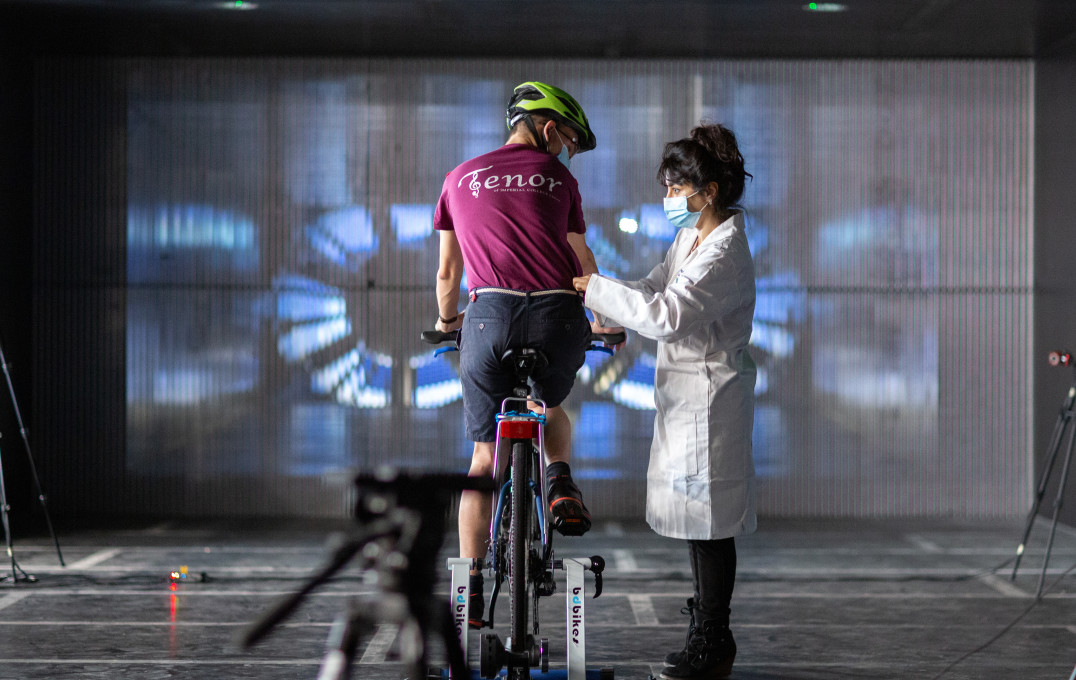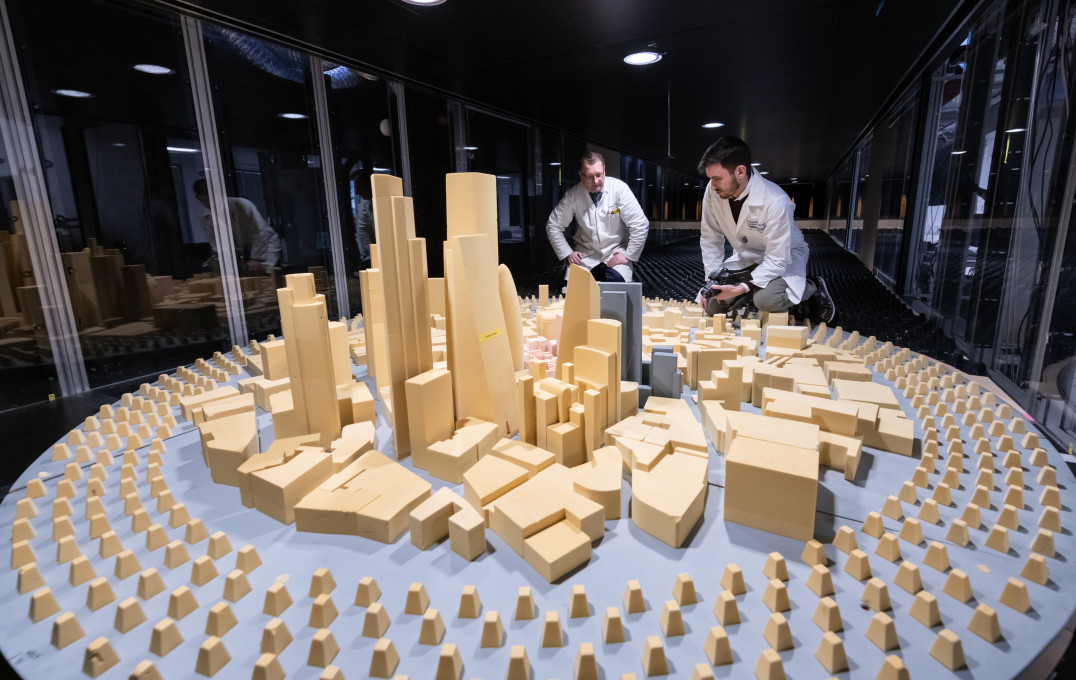

New research has demonstrated how simulations could produce more detailed and accurate data quicker than physical wind tunnel experiments.
With access to more detailed data, engineers will be able to optimise the design of jet-engine turbine blades and achieve greater weight savings. This would increase the fuel efficiency of aircraft and reduce emissions that contribute to climate change, and comes as airlines are asked to prioritise reducing emissions over offsetting their carbon.
Although digital wind tunnel testing may not replace physical wind tunnels for some years, our study suggests it’s now a real possibility. Professor Peter Vincent Department of Aeronautics
The international team of researchers from UK, USA, Japan, Canada and Germany, say that their findings, published in Computers & Fluids, also opens the door to ‘digital’ wind tunnels eventually replacing physical wind tunnels, which could reduce costs and lead to improved designs.
Jet engine turbines are currently designed using a combination of Reynolds Averaged Navier Stokes (RANS) simulations, which try to capture the behaviour of turbulent flow using approximate models, and wind tunnel testing.
However, RANS simulations have limited accuracy, especially for unsteady flows, and real-world wind tunnel testing can be both costly and time-consuming, and often provides designers with limited data. Consequently, there is an emerging interest in using high-fidelity Direct Numerical Simulations, that capture all aspects of the turbulent flow physics directly, to obtain accurate predictions without resorting to use of wind tunnels.
Applications beyond turbo machinery include those in the marine, automotive, and green energy sectors Professor Peter Vincent Department of Aeronautics
Lead author Professor Peter Vincent of Imperial’s Department of Aeronautics said: “Our simulations are exciting for several reasons. Firstly, they provide us with more accurate and detailed data, so we can learn a lot about the underlying flow physics and potentially use it to train new turbulence models via machine learning-based approaches.
"Secondly, with advances in computer hardware we may soon be able to acquire the data faster and at lower cost than from physical wind tunnel experiments. So although digital wind tunnel testing may not replace physical wind tunnels for some years, our study suggests it’s now a real possibility.”
While the study specifically focused on testing jet engine turbine blades, there are many others areas where the approach could also play a role, including the design of submarines, cars, high-rise buildings, and wind turbines – all of which currently rely heavily on wind tunnel testing.
Professor Vincent added: "Applications beyond turbo machinery include those in the marine, automotive, and green energy sectors, where we hope the technology will play an important role in coming years.”
The simulations were undertaken using the PyFR software on the Titan supercomputer at Oak Ridge National Laboratory. This software is able to run on a range of different hardware platforms, including modern NVIDIA Graphical Processing Units such as those that make up Titan.
This work was supported by EPSRC and European Commission.
“High-order accurate direct numerical simulation of flow over a MTU-T161 low pressure turbine blade” by A. S. Iyer, Y. Abe, B. C. Vermeire, P. Bechlars, R. D. Baier, A. Jameson, F. D. Witherden, P. E. Vincent, published in Computers & Fluids.
Main image: Imperial College London
Article text (excluding photos or graphics) © Imperial College London.
Photos and graphics subject to third party copyright used with permission or © Imperial College London.
Reporters

Tom Creese
Department of Aeronautics

Contact details
Email: press.office@imperial.ac.uk
Show all stories by this author

Caroline Brogan
Communications Division

Contact details
Email: press.office@imperial.ac.uk
Show all stories by this author
Leave a comment
Your comment may be published, displaying your name as you provide it, unless you request otherwise. Your contact details will never be published.






Comments
Comments are loading...